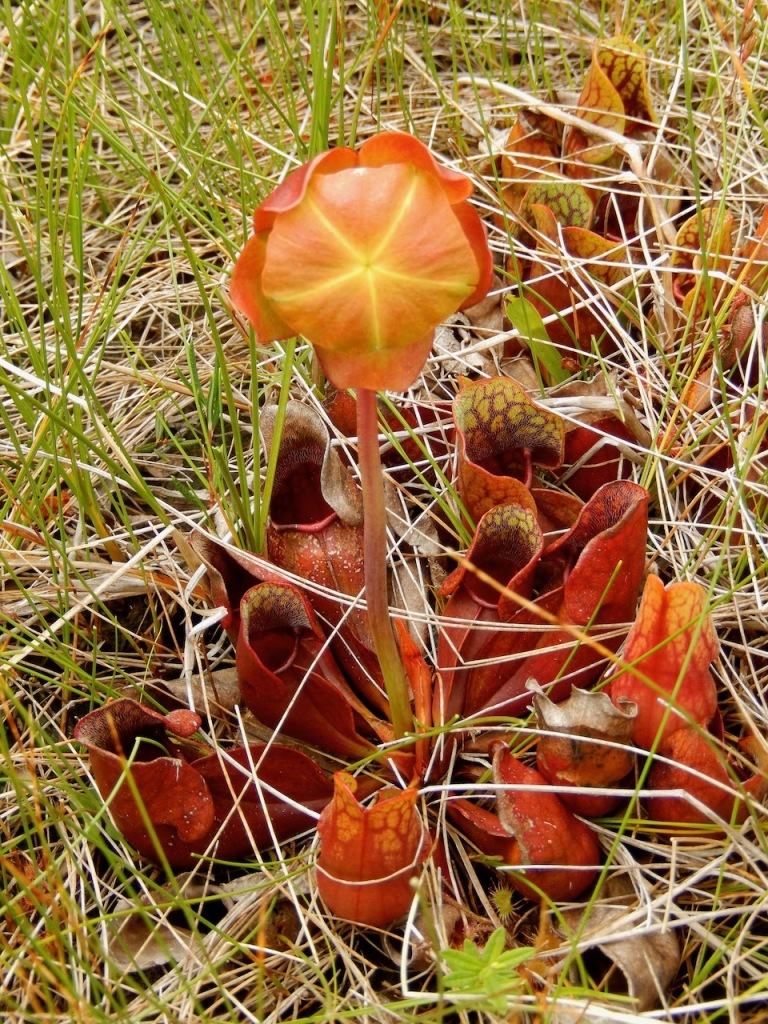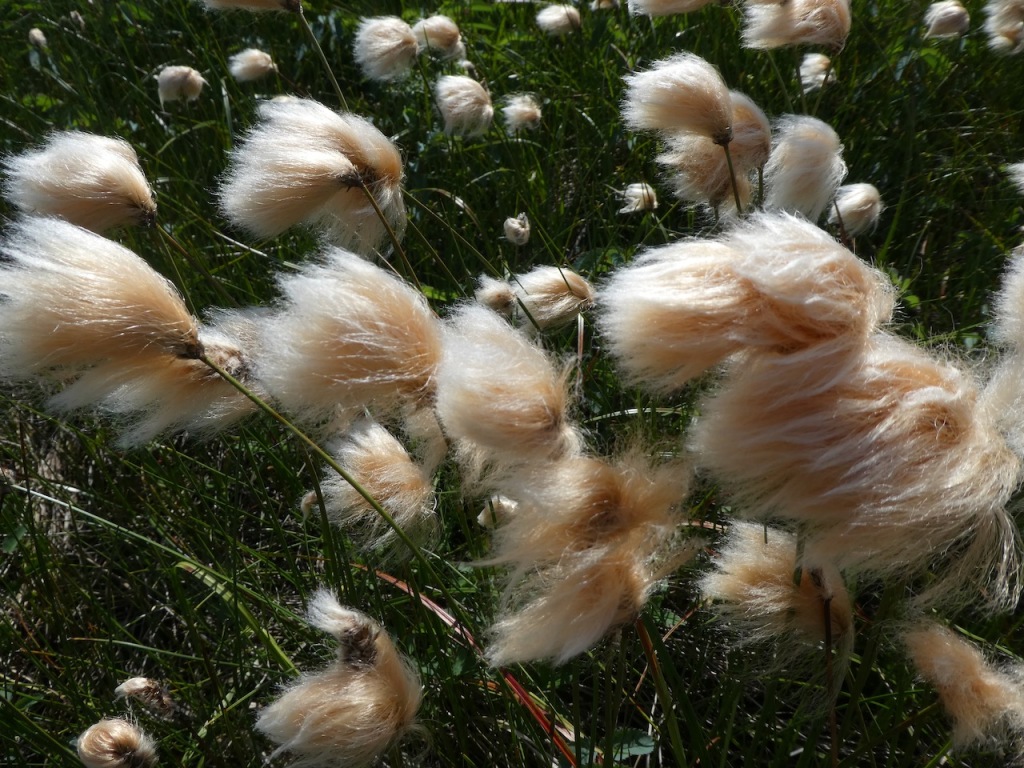As a tribute to summer as it yields to autumn, and to celebrate the opening of the Canadian border, let’s travel to western Newfoundland to explore a fen with fellow Vermonter Jill, a botanist friend who is wild about fens.
It is a drizzly afternoon in August, 2019.
Jill bends over her tall rubber boots and pulls up a handful of muck from a water hole, or fen puddle. “This is the foundation of the fen which you can’t see,” she says. “Here is the moss that grows under the other plants.” Her voice shines to match her eyes. Sure enough, her students George, Lew, and Audrey notice threads of plant material lacing the black ooze.
We are traversing one of Jill’s favorite fens in Gros Morne National Park. From the road it resembles a hillside pasture. To get there we meandered through sprawling junipers. The ground beneath felt firm. Where the meadow opened up, Jill loped to the left and we followed. The ground beneath turned spongy. The fen.
For decades I labeled any spongy wet ground, “boggy.” I knew of bogs, marshes, and swamps but not fens. Canada showed me fens. On hikes across the highlands of Cape Breton and Newfoundland Lew and I have traversed kilometers of fens in river shoes, relishing how wet feet cool the body on hot days. (In my experience, Newfoundlanders suffering on a hot day will complain of how “warm” it is.)
“ONE BOG, MANY FENS,” declares Jill from a hummock of moss near the water hole. “All bogs are essentially the same. A bog gets its moisture only from the atmosphere; no streams enter or exit a bog.”
“A fen, on the other hand, has input of water,” she says. “Streams run through a fen but there are variations in fen ecosystems. This fen is called a sloping fen.”
Jill continues, “A fen is always a peatland. Organic layers pile up and don’t decompose due to the cold.”
We squish across grassy stretches. Grasses? No, sedges. Grasses acquire oxygen through their roots, but in a fen, the land is so flooded that there is no oxygen down there. “Plants that don’t need roots grow in fens,” she explains.
“Then how do fen plants get their oxygen?” I ask.
Jill strides over a fen puddle to a patch of sedge with golden tops. “Sedges have hollow stems that carry air down to the root system.” She caresses a stem that’s light in hue. She has befriended the sedges during decades of fen research in Canada and Scotland.
“And see that tamarack (larch) tree ahead? Tamaracks survive here because they can grow new roots at a higher level when lower roots become submerged in water.” (Humans can, too.)
The further we amble, the further the fen stretches. Hummocks rise as pincushions of sphagnum moss, like benches in a park. Jill says, “Since the hummocks are elevated above the water, each one is a mini-bog. Their only source of water is the atmosphere.”
Jill continues to greet her old friends, the fen plants. I greet the fen puddles. For each of us humans, an experience of the New is shaped by associations with the Old. I am drawn to what I know: how to choose just where to spring over a puddle without breaking hiking stride. Years ago I gave them a name: Teacups. Teacups are my old friends.
“See how they (the teacups) form perpendicular to the slope of the fen, in terraces?” she asks. “This fen is not just a sloping fen but also a patterned fen.”
Today: patterned fen sedge
bog moss
soft wet wonder
Across the road:
Peridotite Harsh hues
Patterned rock Defiant flowers
Tableland Dry wonder
[All the photos are by Lew Coty.]










Loved learning about the fens. Thanks for sharing!
LikeLike
Beautiful! Thank you. Please, more…..
LikeLike
This is a new world new word for me.
Fen puddles
Thanks for the photos abs the blog
Fascinating
LikeLike